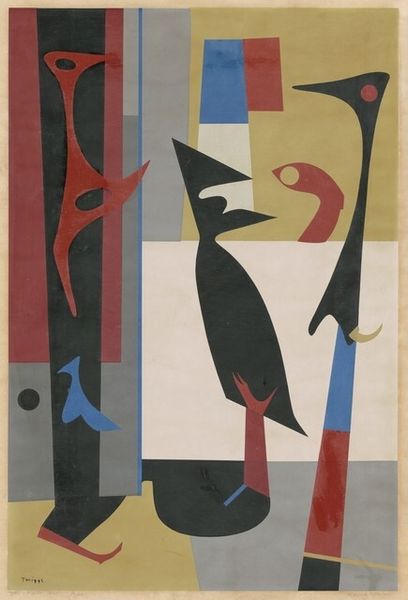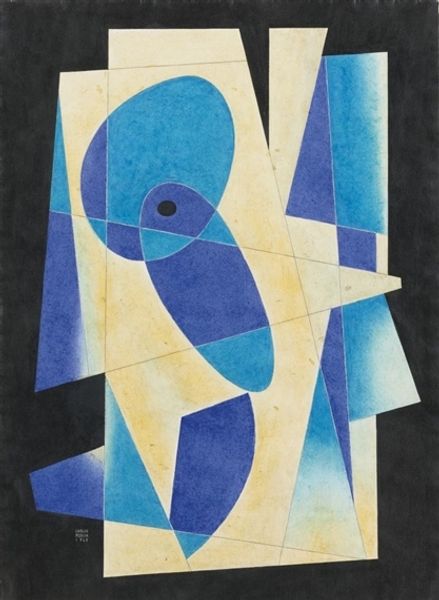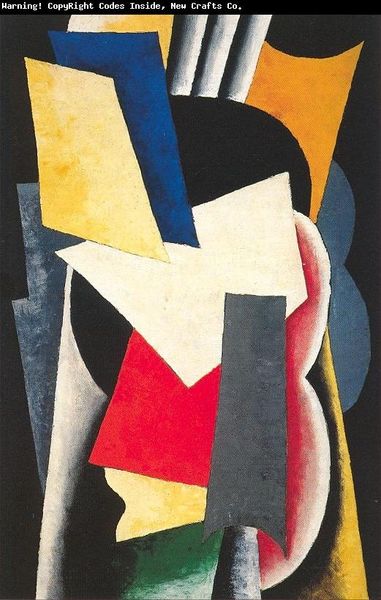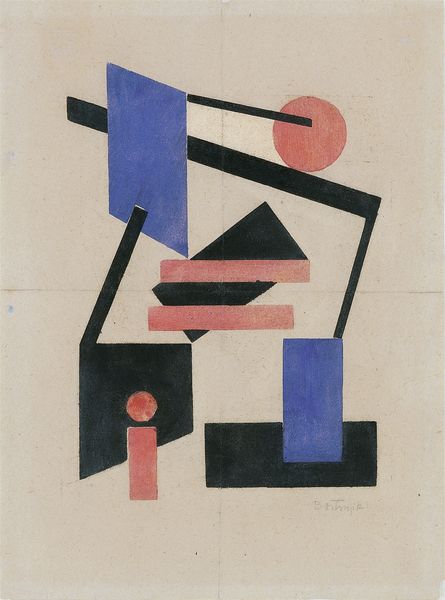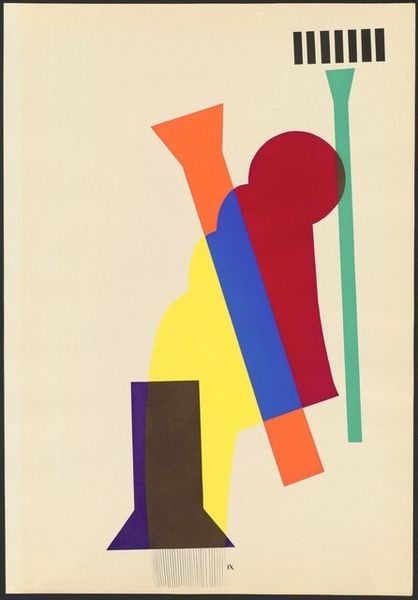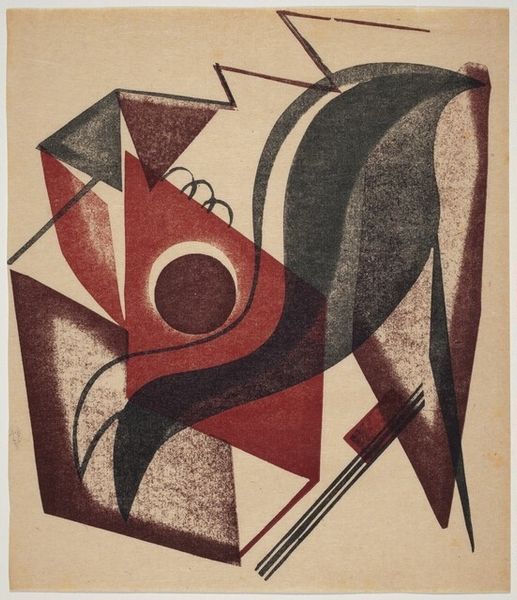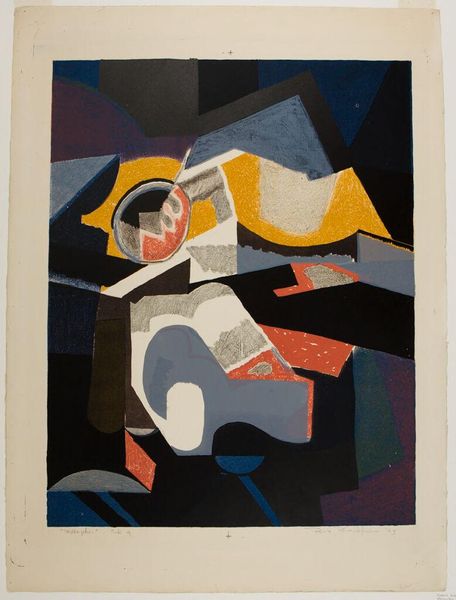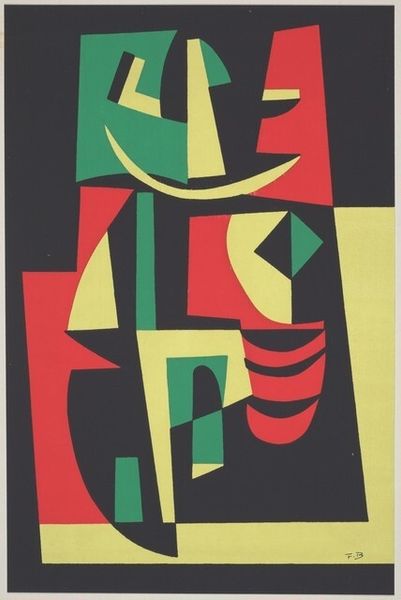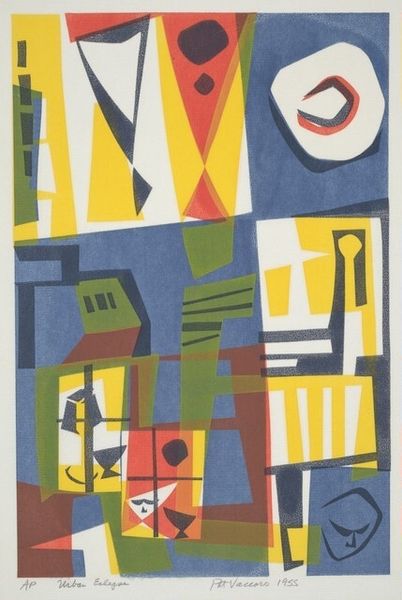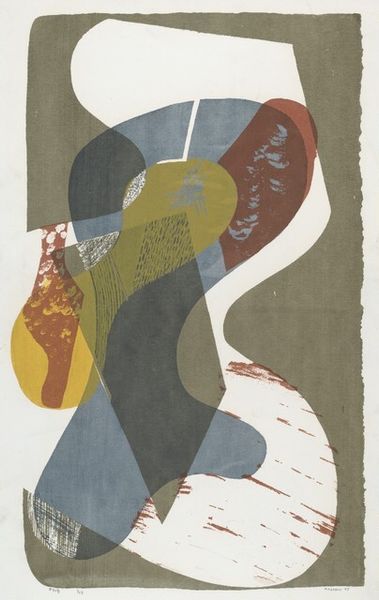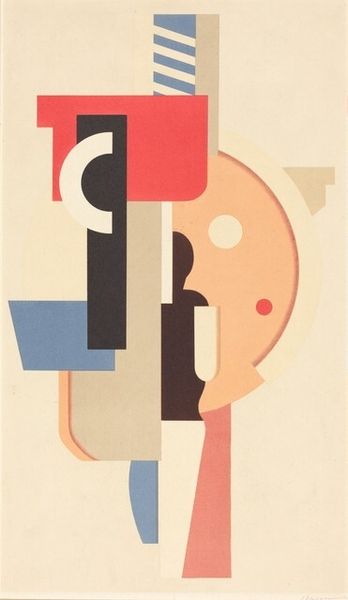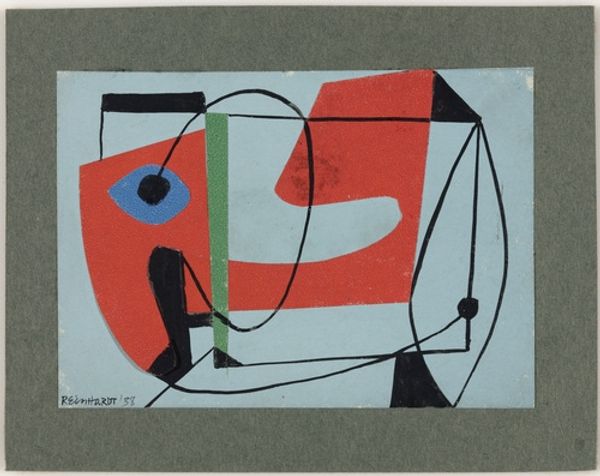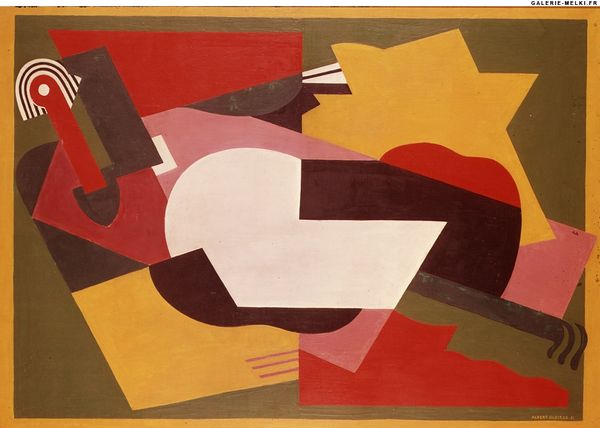
# print
#
form
#
geometric-abstraction
#
abstraction
#
line
#
modernism
Dimensions: Image: 254 x 203 mm (10 x 8 in.) Sheet: 480 x 315 mm (18 7/8 x 12 3/8 in.)
Copyright: National Gallery of Art: CC0 1.0
Curator: This is "Abstraction No. 1," a 1932 print by Louis K. Stone. Immediately, I’m struck by how this print manipulates its medium; you can see the texture, layering, and the precision achieved in its registration. Editor: My first impression is a sense of playful tension. The bright colors – the sky blue, red, yellow – coupled with the bold shapes, give it an almost mischievous energy. Curator: Indeed. And consider Stone’s choices in technique: printmaking wasn't just about reproduction, but also experimentation, even a kind of rebellion against the idea of art as a unique, untouchable object. By embracing industrial processes, Stone engages directly with the labor involved. Editor: That focus on labor really makes me consider who had access to making and owning art at the time. Who was this artwork for, and how did its geometric style speak to the socio-political landscape of the '30s? Curator: Well, geometrical abstraction itself can be read as a search for order amid chaos—reflecting perhaps the uncertainty that defined the Great Depression. Moreover, abstraction became aligned with ideas of progress and modernity in this period. Editor: The composition – the sharp angles alongside those more curvaceous shapes - suggest this search isn't just about harmony but about acknowledging conflict, that tension between form and fluidity. Curator: And in the making, you've got a meeting of minds and materials that challenges any fixed view on the hierarchies between the 'fine' and 'applied' arts. Editor: Right, and that pushes me to think of who was doing the "applying" of arts at the time: whose labour and whose voices remain less highlighted in narratives of art history and Modernism more broadly? How can art like this inspire us to reconsider social inequalities within art practices? Curator: It is precisely these social inequalities embedded within print production – mass consumption and so forth – that gives Stone’s "Abstraction No. 1" enduring relevance. Editor: Yes, examining how we engage with art, then and now, demands constant self-reflection. "Abstraction No. 1," serves not just as an aesthetic encounter but a potent reminder.
Comments
No comments
Be the first to comment and join the conversation on the ultimate creative platform.
